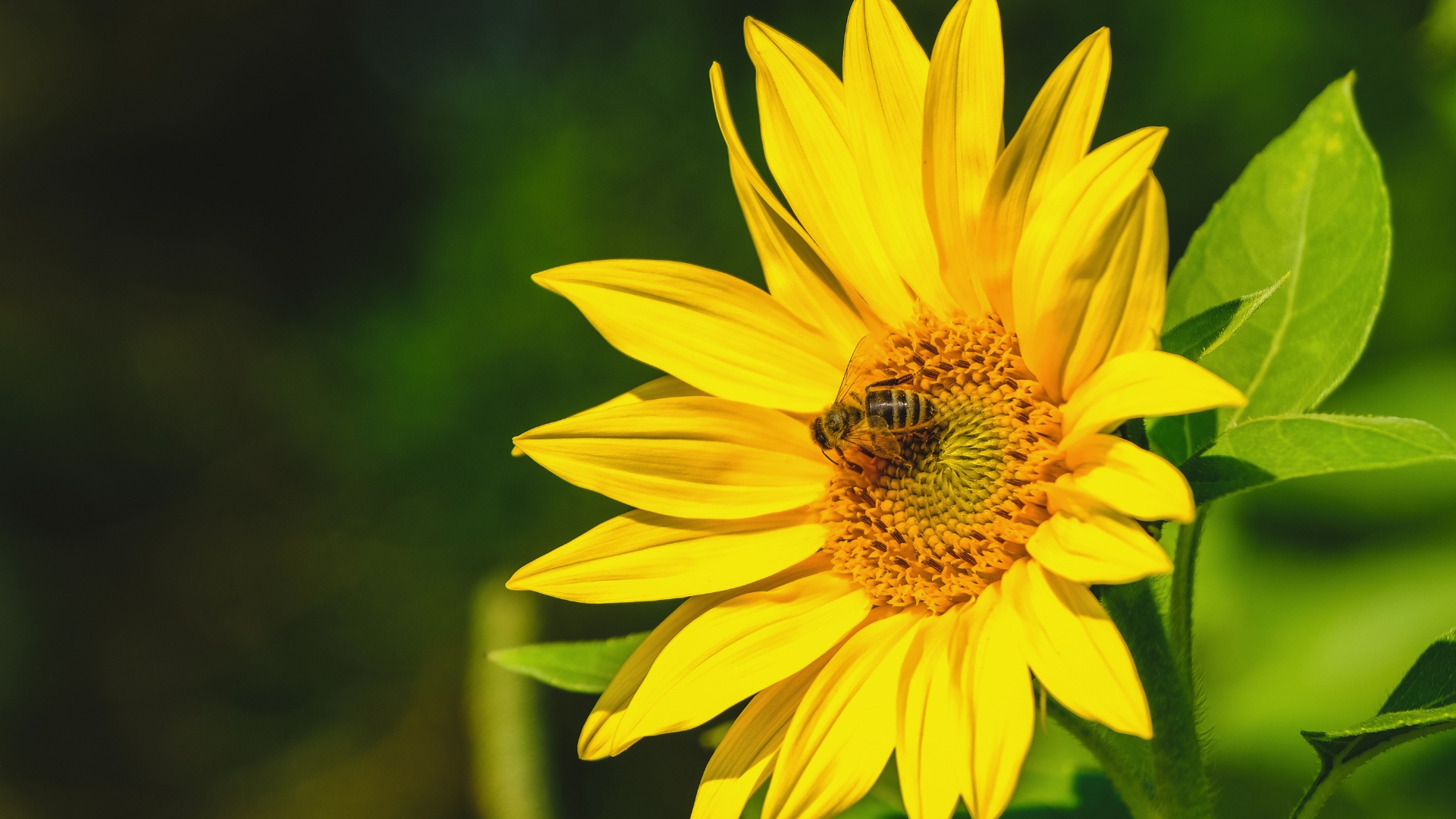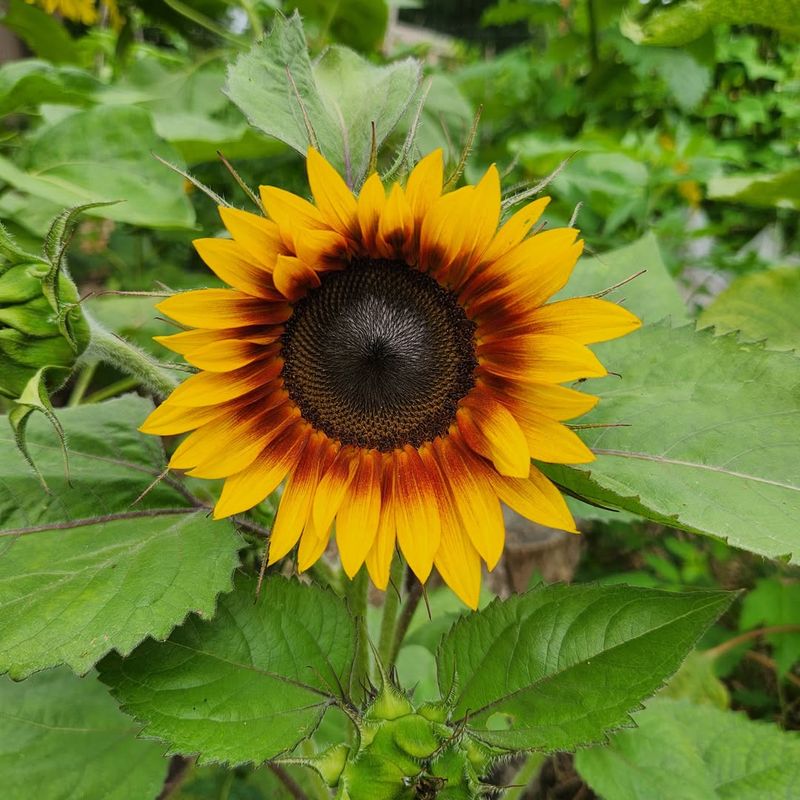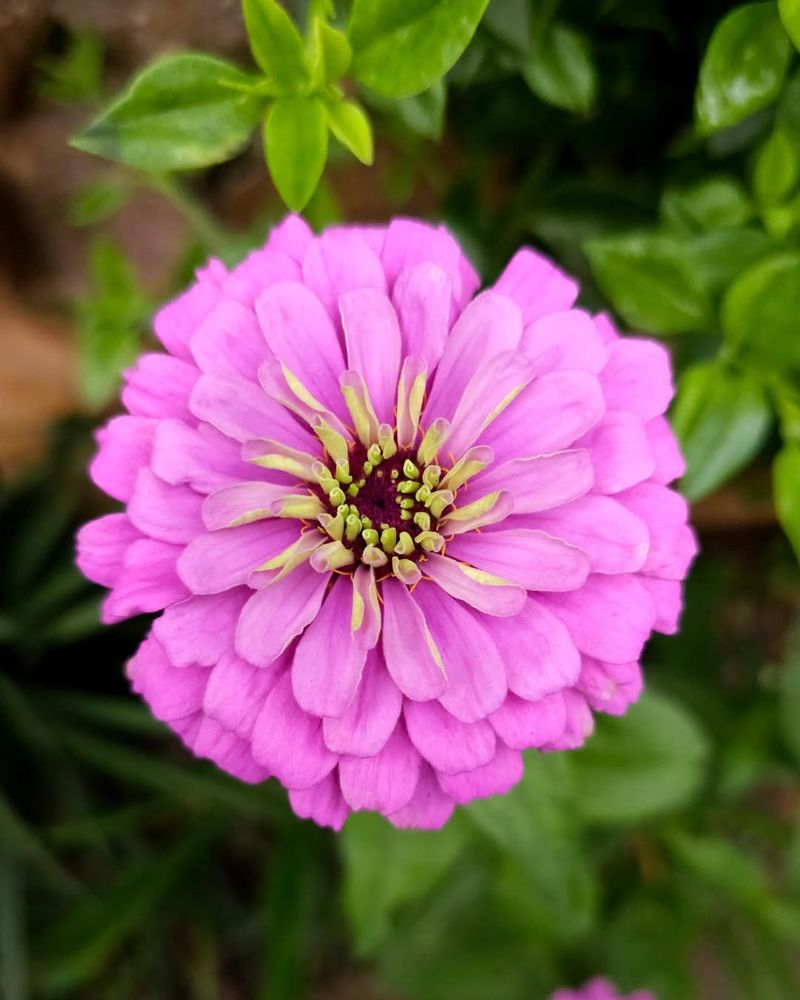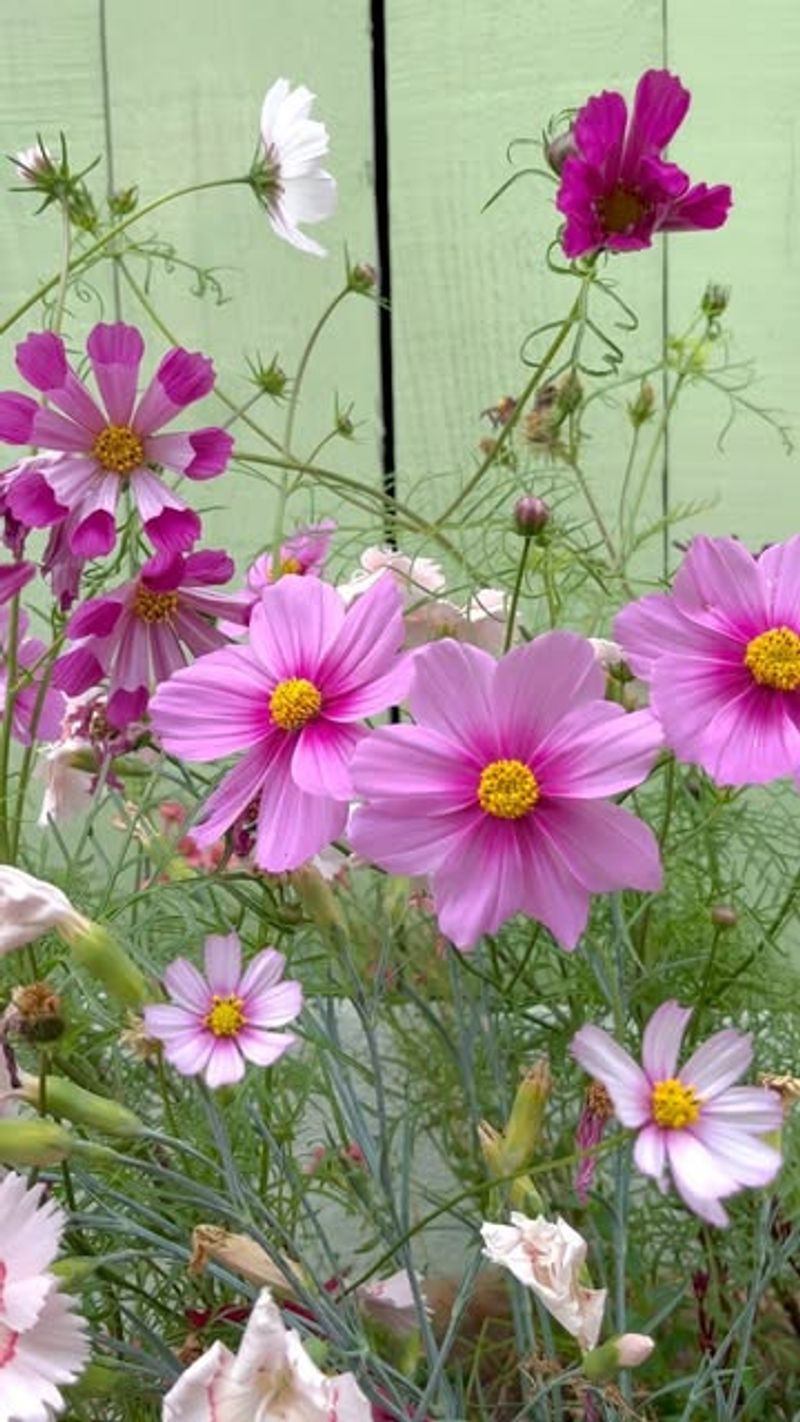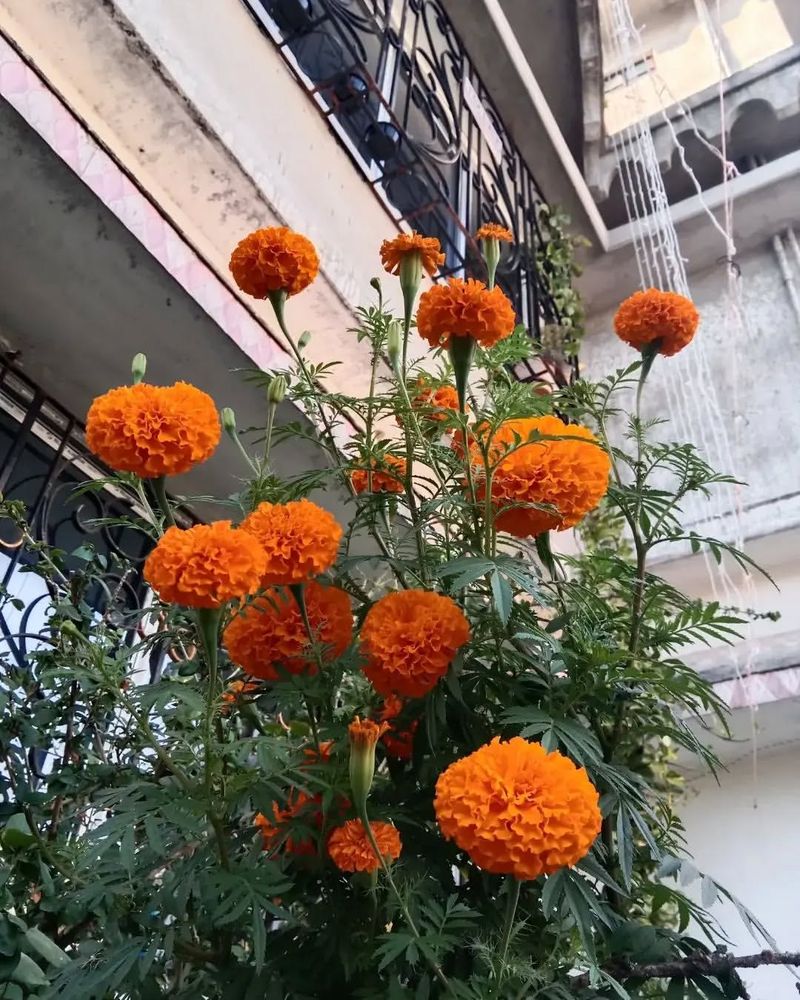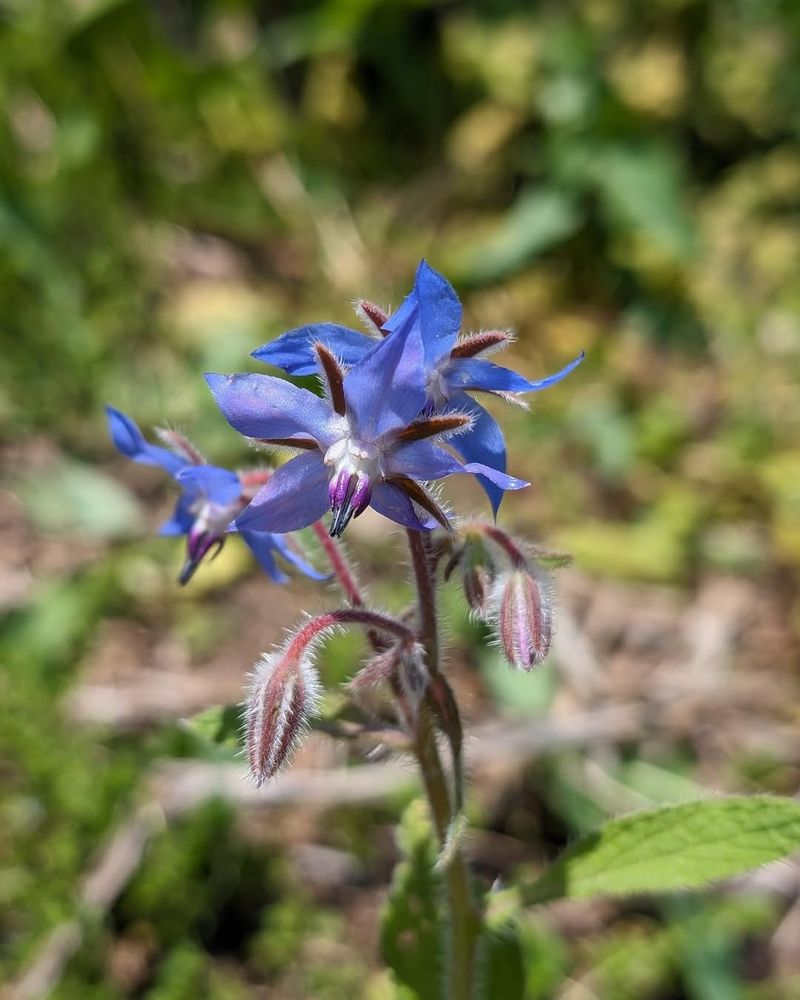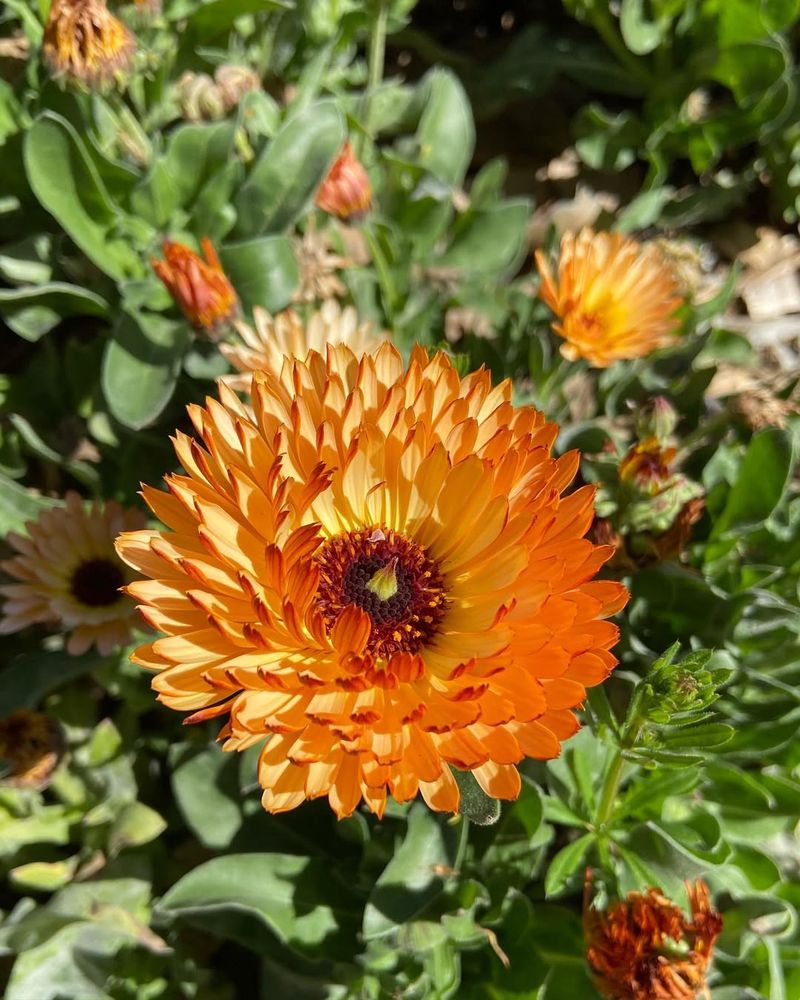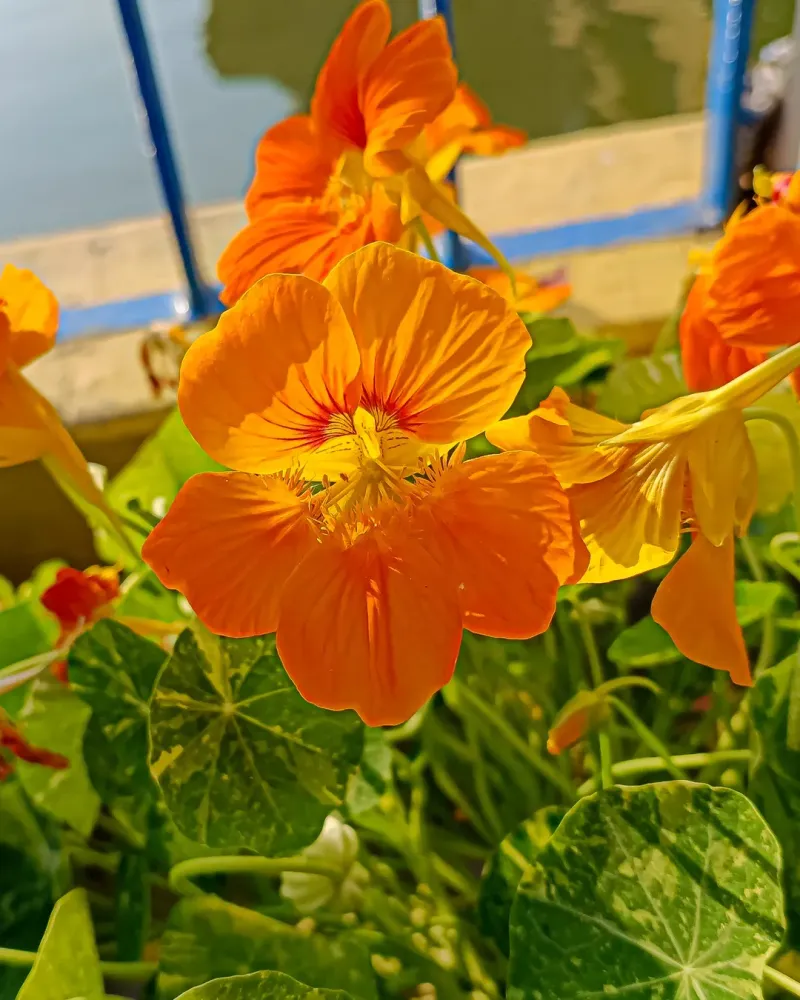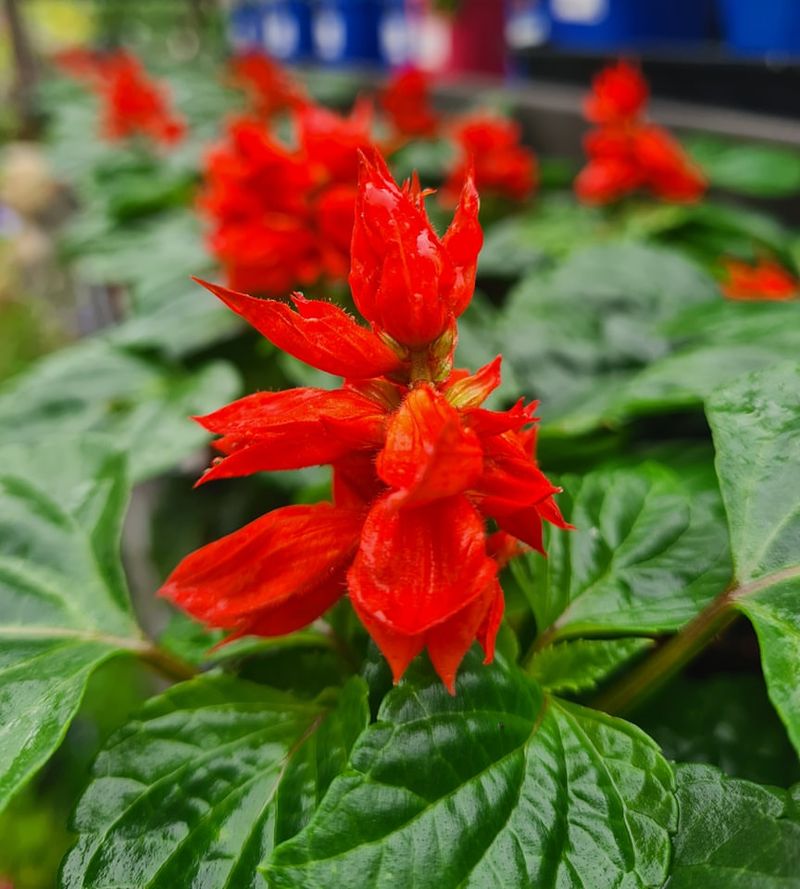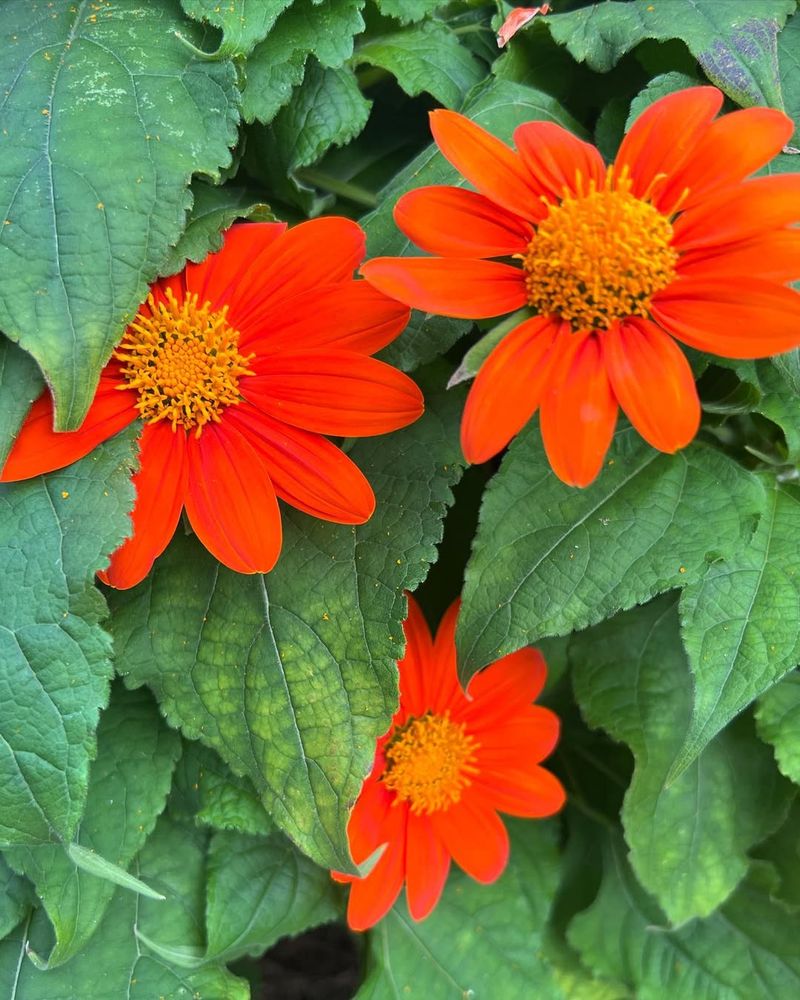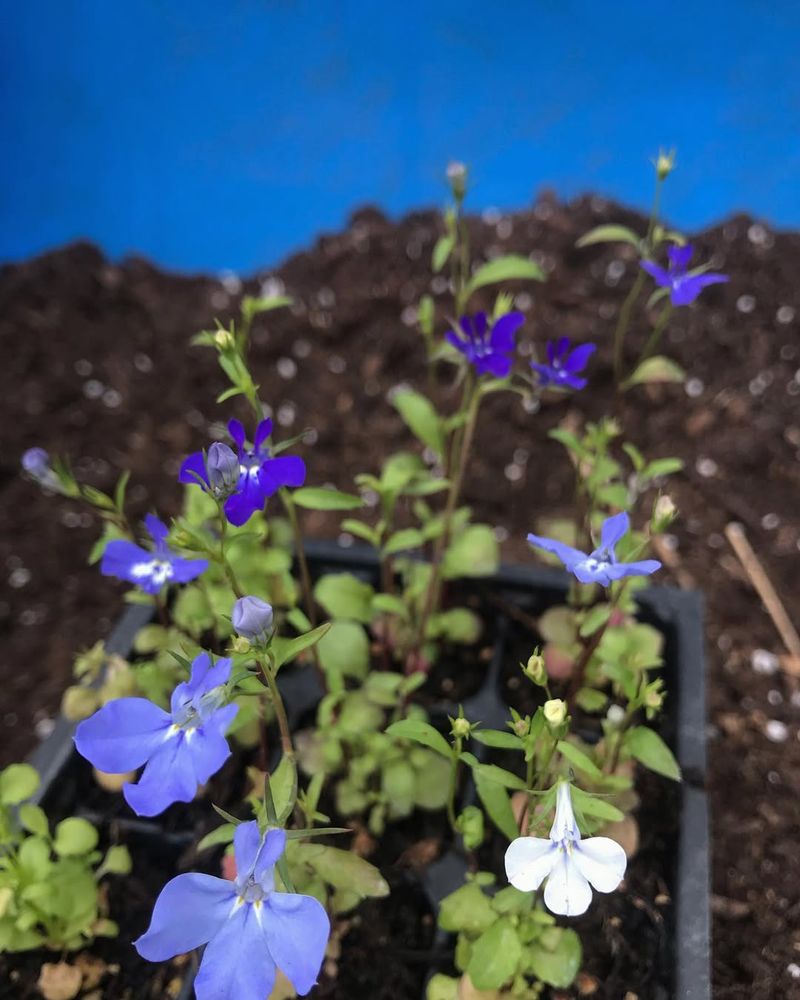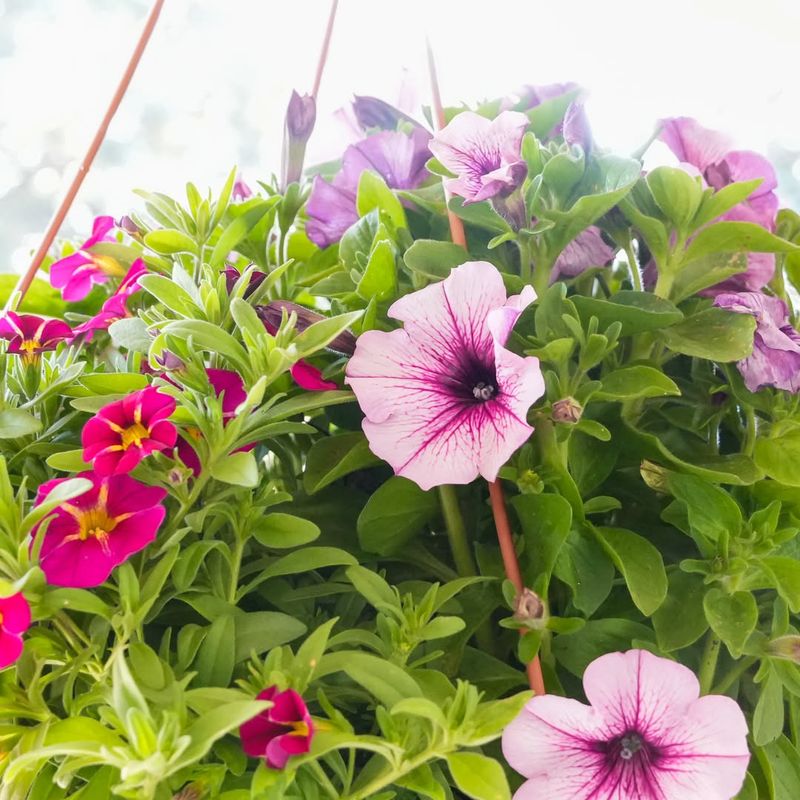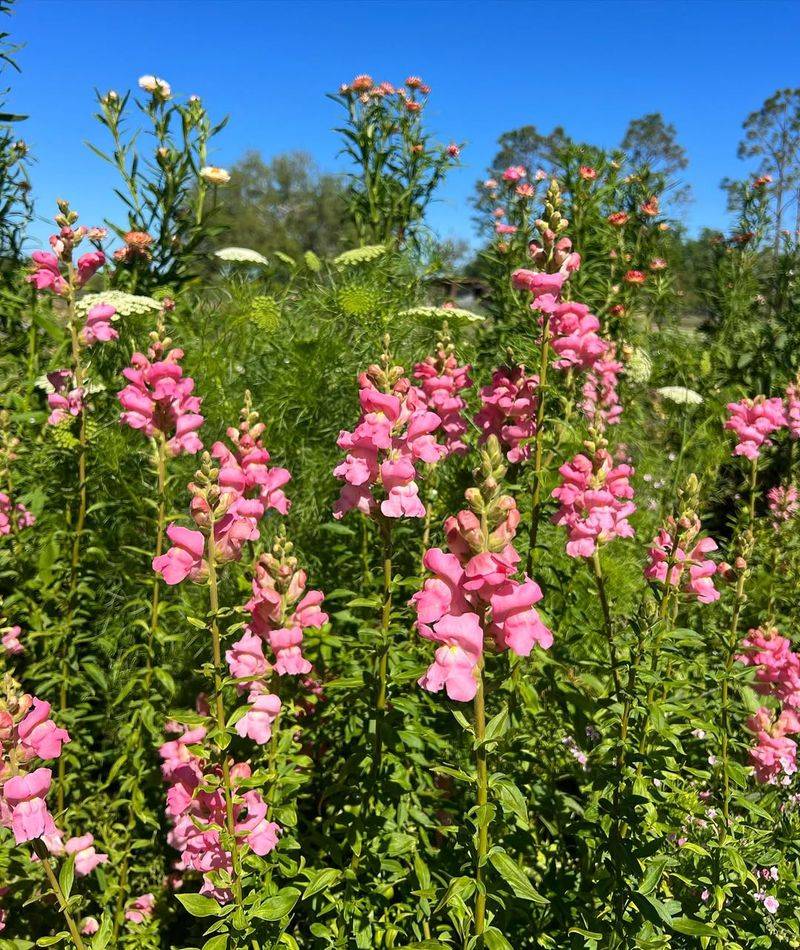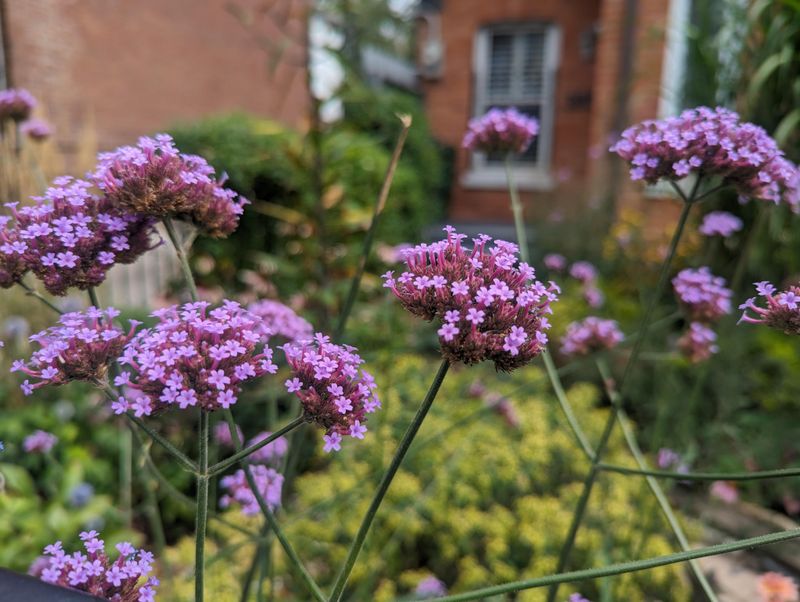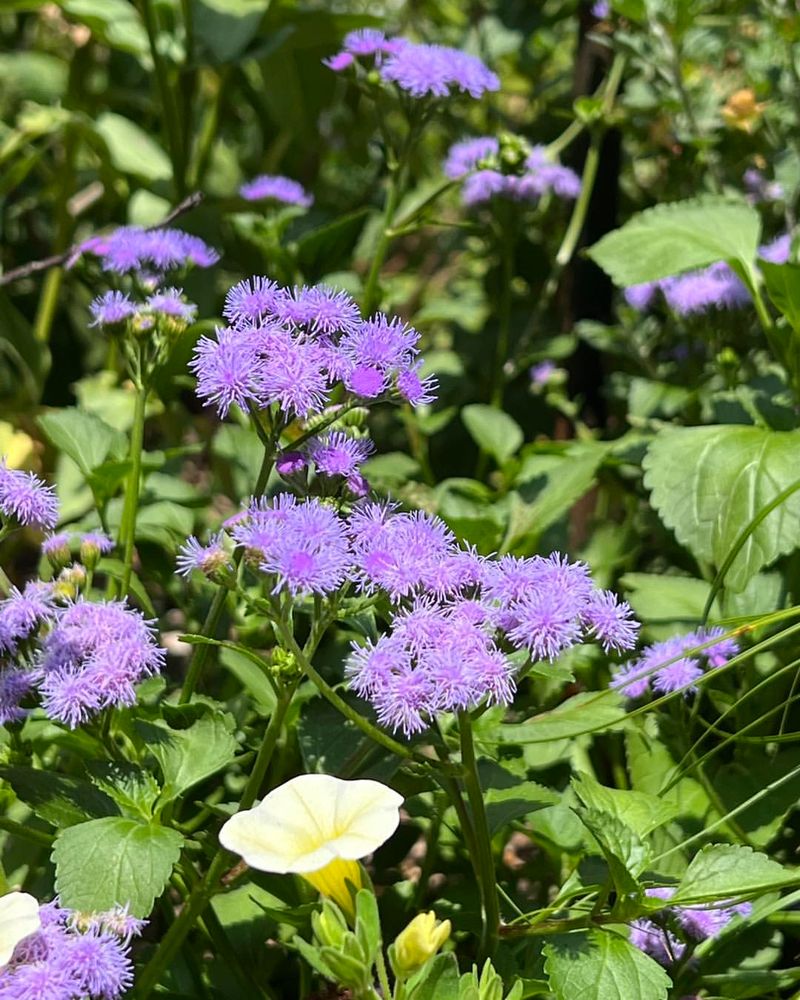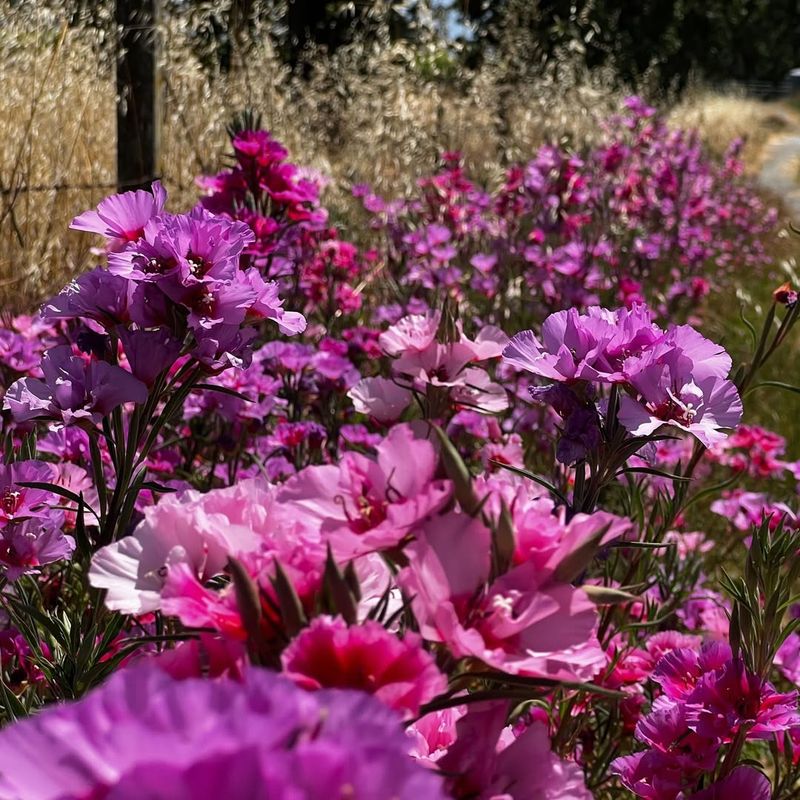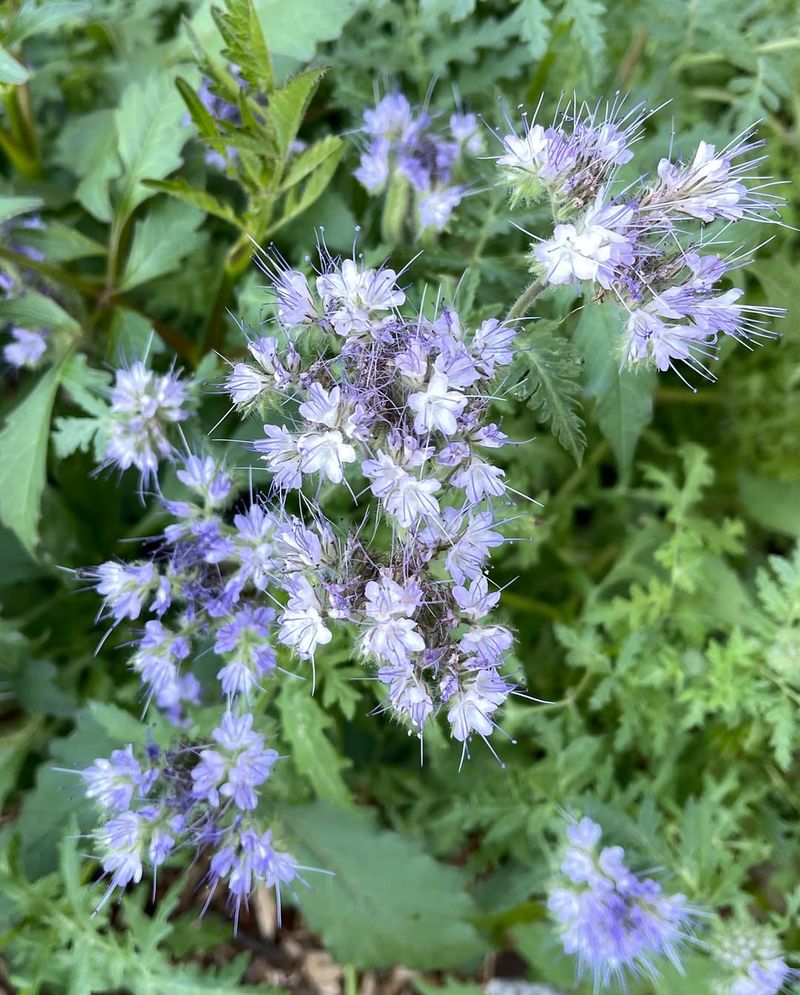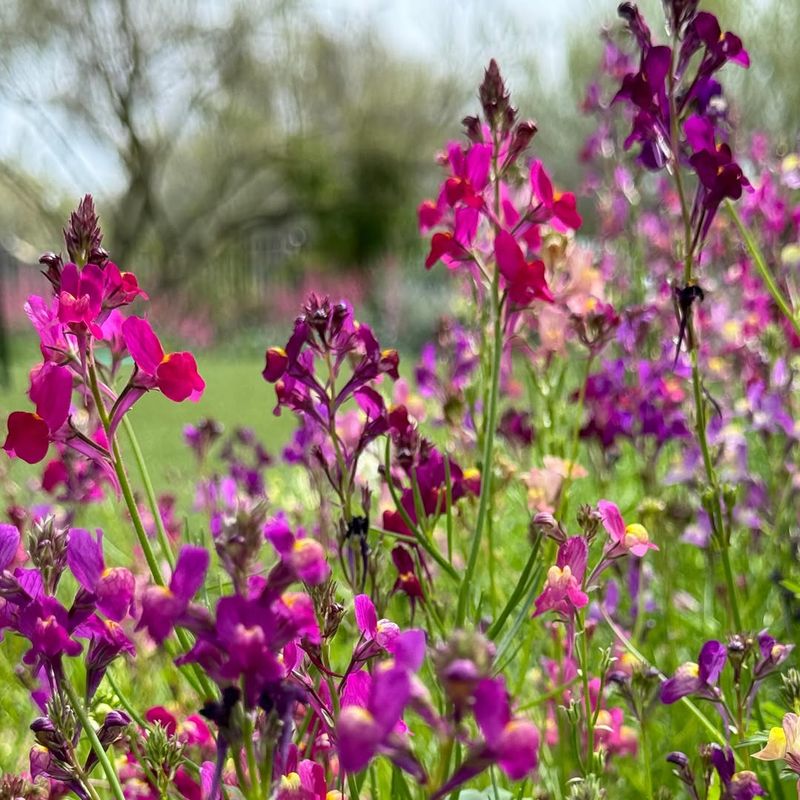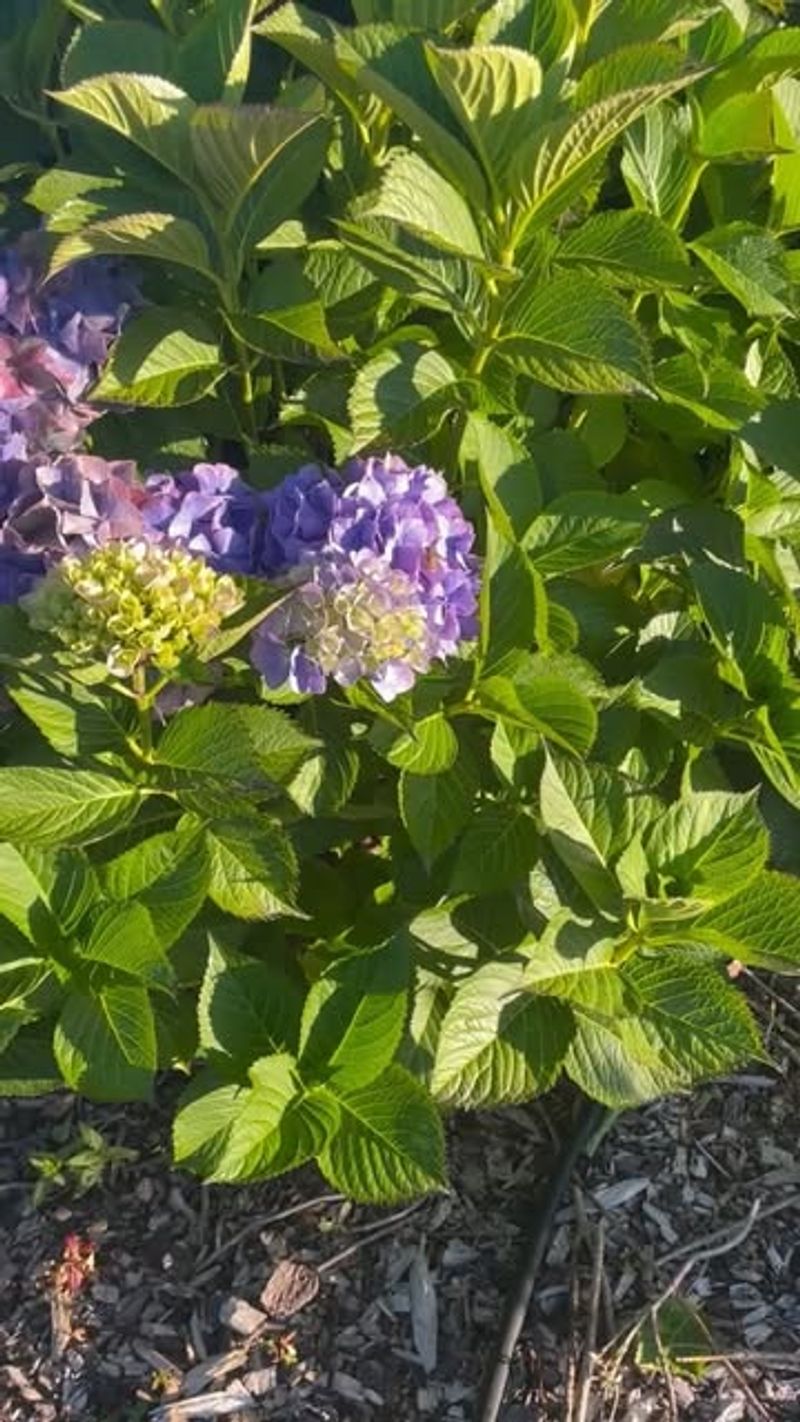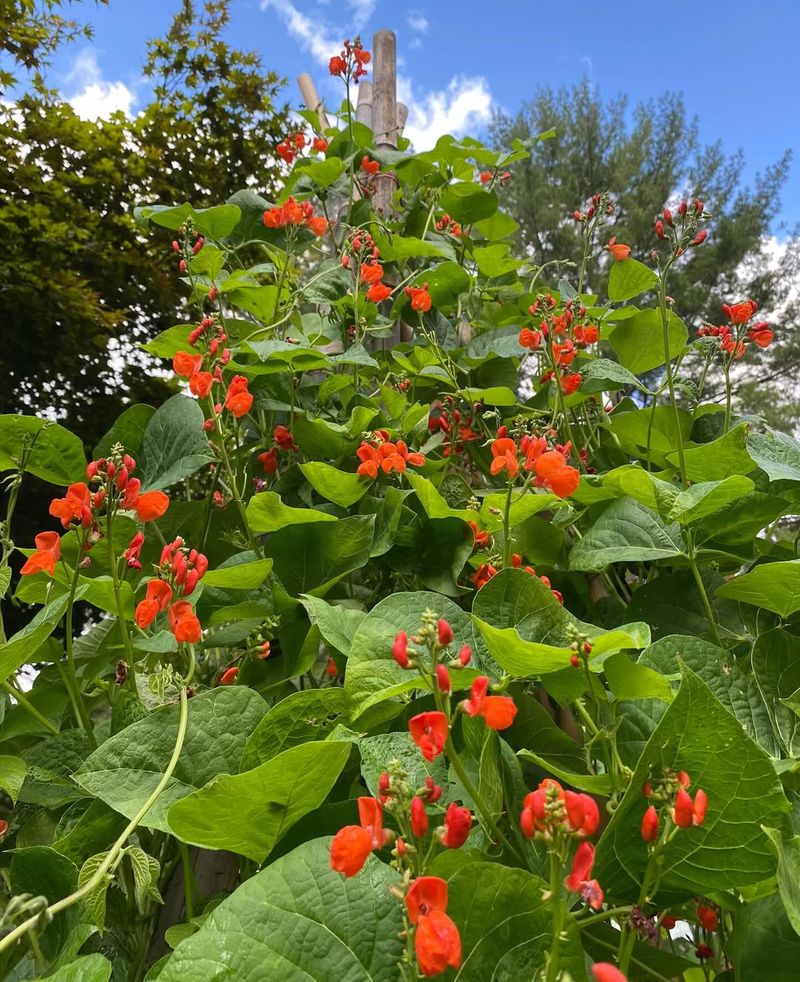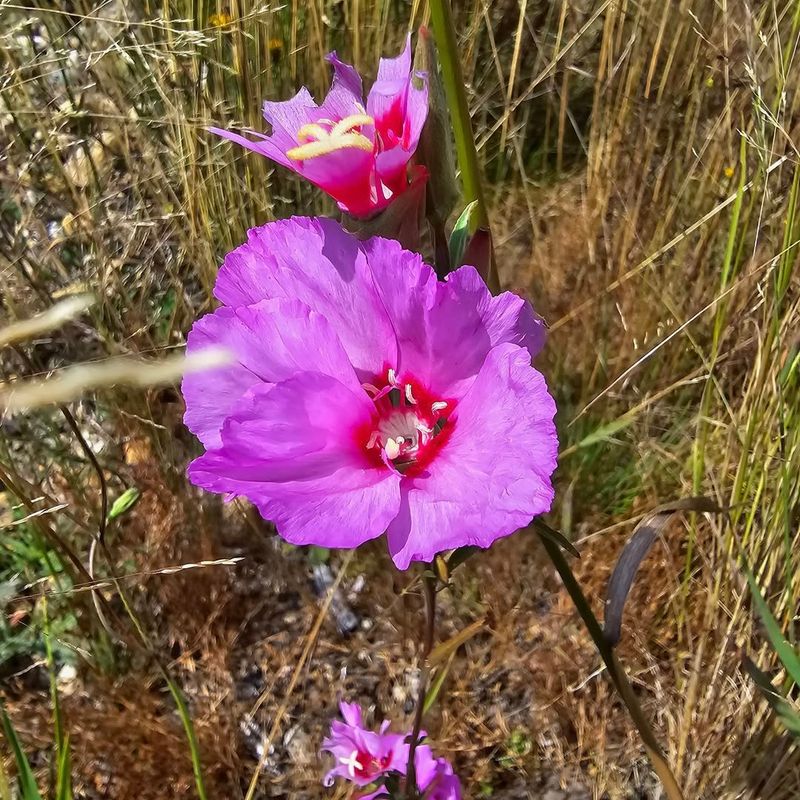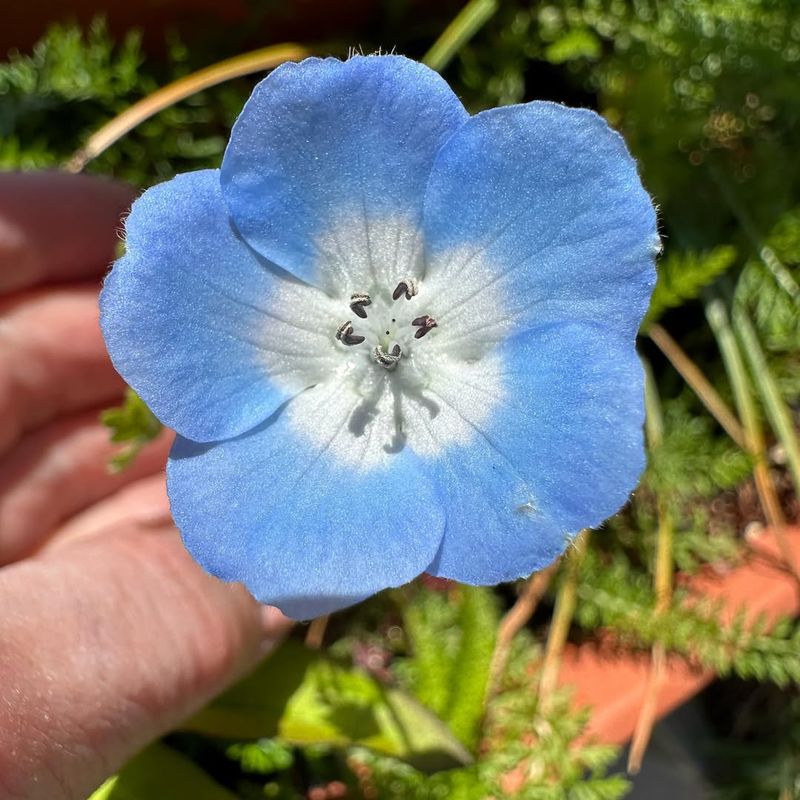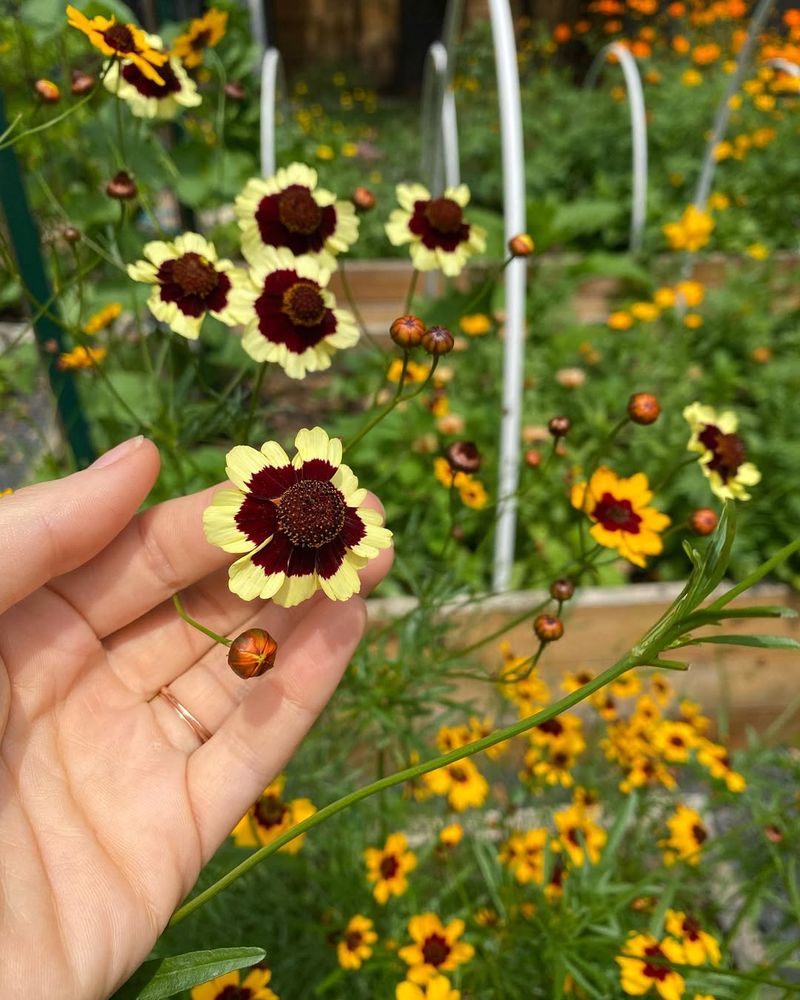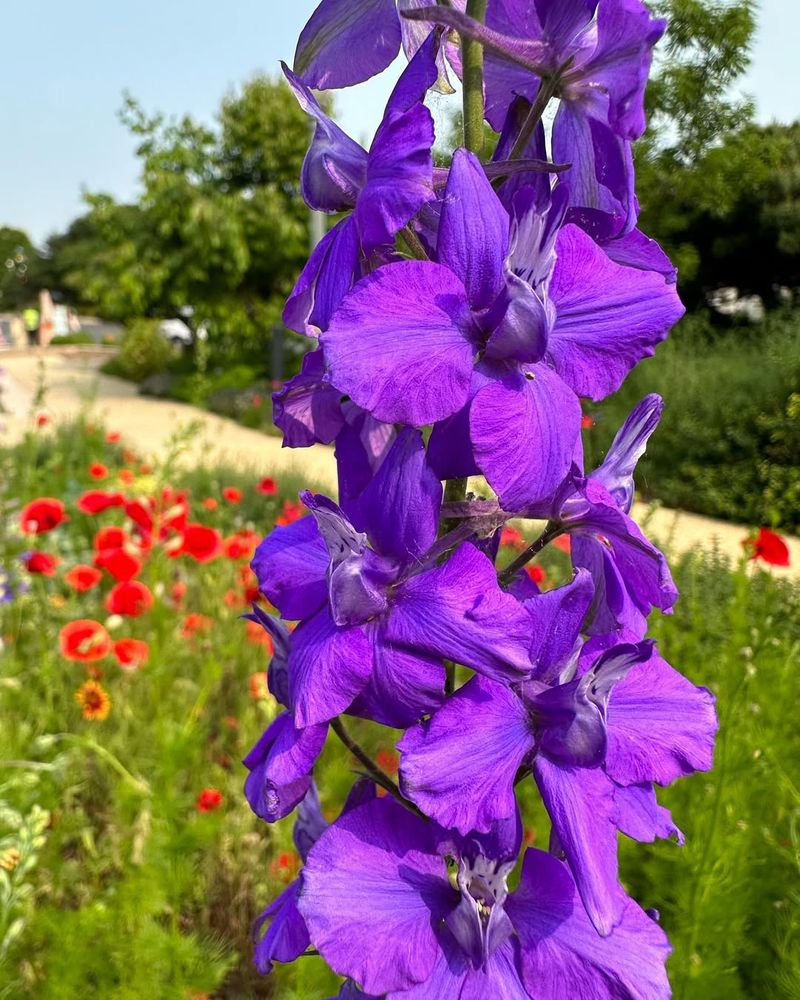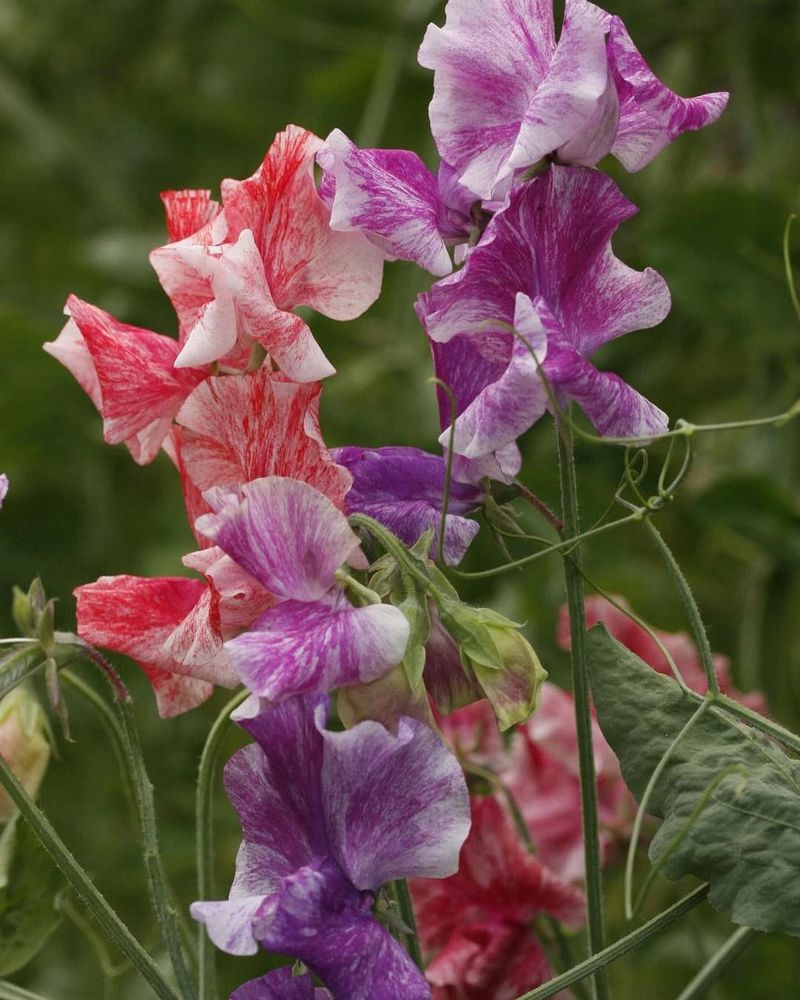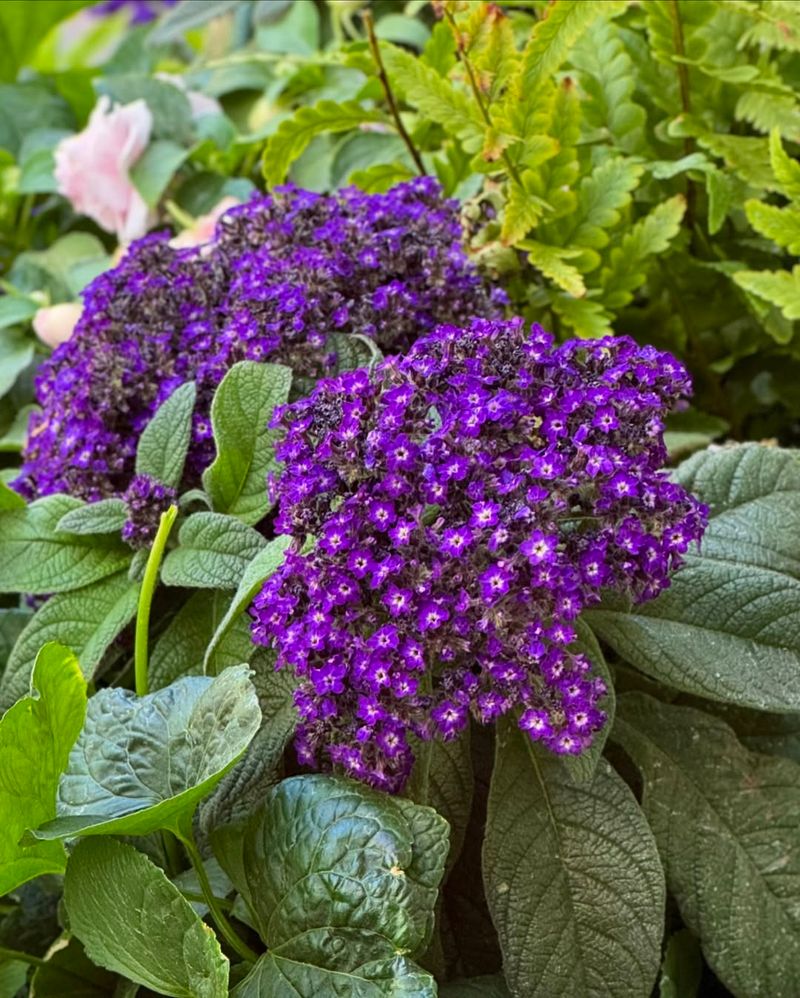Hello garden enthusiasts! As the seasons change, our gardens offer a vibrant symphony that attracts not only the eye but also the fluttering, buzzing visitors we adore—bees. These diligent pollinators are crucial for our ecosystems, and what better way to support them than by filling our gardens with beautiful, bee-attracting annual flowers? Join me on this colorful journey as we explore 28 delightful blooms that not only enliven your garden but also create a haven for our buzzing friends.
1. Sunflower (Helianthus annuus)
Towering tall in the garden, sunflowers create a cheerful spectacle with their golden faces. These sun-loving giants can reach up to 10 feet and provide essential food for bees.
Their sturdy stalks need loose, well-drained soil to prevent breaking. Planting in rows can help them support each other. Sunflowers are not just a visual treat but also a bee magnet, ensuring your garden buzzes with life.
Whether it’s sunny or partly shady, these flowers stand tall, offering a sunny disposition to any garden. Keep them happy with plenty of sunlight and watch the bees flock!.
2. Zinnia (Zinnia elegans)
A splash of color awaits in the form of zinnias, with petals ranging from pink to red and even orange. Bees can’t resist their vivid charm. These beauties thrive in full sun and prefer well-drained soil. Regular deadheading encourages blooms throughout the season.
Zinnias bloom from spring to the first frost, offering a rainbow palette that invites bees to your garden. With little maintenance, they turn any space into a vibrant sanctuary for pollinators.
3. Cosmos (Cosmos bipinnatus)
Gently swaying in the breeze, cosmos flowers add a touch of whimsy with their feathery foliage and delightful blooms. Their nectar-rich flowers are a favorite among bees. Cosmos thrive in poor to average soil and can withstand drought conditions, making them a resilient choice.
Space them well to allow their beauty to spread. With little care, they create a dreamy landscape that dances with life and color, drawing in bees from all around.
4. Marigold (Tagetes spp.)
Bold and bright, marigolds bring a spicy aroma to the garden, attracting bees with their warm shades of orange and yellow. Their scent is not only enticing but also deters pests.
Sow seeds directly into the soil after the last frost, and you’ll have a garden filled with color and life. These hardy flowers are easy to grow and maintain, providing a natural barrier against garden pests while offering a feast for bees.
5. Borage (Borago officinalis)
With its star-shaped blue blooms, borage stands out as an herbal delight. Its edible flowers and leaves add a unique touch to salads and drinks while attracting bees. Borage is known for its ability to reseed itself, ensuring a yearly return without much effort.
Its presence boosts bee activity significantly. This annual herb grows well in full sun and is a charming addition to any bee-friendly garden, offering both beauty and functionality.
6. Calendula (Calendula officinalis)
Radiating warmth, calendula flowers shine in shades of orange and gold, creating a sunny spot in any garden. These blooms are a favorite among bees and butterflies. Calendula thrives in cooler seasons and can flourish in a range of soils, though well-drained conditions are ideal.
Harvesting petals regularly not only prolongs bloom time but also enhances your culinary adventures. This versatile flower ensures your garden is both beautiful and productive.
7. Cleome (Cleome hassleriana)
Exotic and intriguing, cleome flowers add architectural interest with their spidery blooms. Standing tall, they offer a fragrant allure for bees.
Reaching heights of up to 5 feet, cleomes need ample spacing to show off their grandeur. Their sweet scent fills the air, making them irresistible to pollinators.
These flowers are not only a visual delight but also a practical choice for attracting bees, ensuring your garden thrives with buzzing activity.
8. Nasturtium (Tropaeolum majus)
Playful and peppery, nasturtiums cascade gracefully, offering a whimsical touch to any garden. Their vibrant blooms double as edible delights. These flowers thrive in poor soil, making them perfect for areas where other plants struggle.
Bees adore their rich nectar. Whether in pots or beds, nasturtiums bring life and color, inviting bees to enjoy their beauty and bounty.
9. Sweet Alyssum (Lobularia maritima)
Delicate and fragrant, sweet alyssum forms a soft carpet that hums with the activity of bees. Its sweet scent is simply irresistible. These blooms are perfect for borders or containers, adding a touch of elegance wherever they’re planted.
Regular watering keeps them thriving. Sweet alyssum offers a low-maintenance option for a bee-friendly garden, bringing both beauty and biodiversity.
10. Salvia (Salvia splendens)
Bold and striking, salvia flowers stand tall with tubular blooms in vivid reds and purples. Bees find them irresistible. These sun-loving plants require well-drained soil and reward you with blooms that last all season. Their vibrant colors add a dramatic touch.
Salvias are a must-have for a buzzing garden, providing both striking beauty and a reliable food source for pollinators.
11. Tithonia (Tithonia rotundifolia)
Fiery and bold, tithonia creates a stunning spectacle with its blazing orange blooms. Bees swarm around these tall, striking flowers. Growing up to 6 feet, tithonia needs space to flourish, thriving in full sun.
Their bright display energizes any garden. This Mexican sunflower adds warmth and vibrancy, making it a favorite for attracting pollinators. Enjoy the lively dance of bees as they visit each bloom.
12. Lobelia (Lobelia erinus)
Electrifying in blue and purple, trailing lobelia offers dainty, nectar-filled blooms that are a hit with bees. Ideal for hanging baskets or edges, these flowers require regular watering to thrive in the heat.
Their vibrant colors create a captivating display. Lobelia adds a touch of elegance to any garden, ensuring bees return time and again for its sweet offerings.
13. Petunia (Petunia spp.)
Velvety and vibrant, petunias offer a sweet allure that attracts bees in droves. Their rich colors create a visual feast.
Whether trailing or upright, petunias require regular fertilization to maintain their lush blooms. They thrive in sunny spots. These adaptable flowers enhance any garden with their beauty, ensuring bees have a delightful source of nectar.
14. Snapdragons (Antirrhinum majus)
Playful and vertical, snapdragons invite bees to explore their intriguing blooms. These flowers add height and color to any space. Snapdragons bloom in cycles, and deadheading encourages fresh flowers. Their diverse colors make them a garden favorite.
With minimal care, snapdragons become a buzzing hub of activity, offering both charm and sustenance to bees.
15. Verbena (Verbena spp.)
Low-growing and summery, verbena offers clusters of purple blooms that bees adore. These hardy flowers thrive in heat and tolerate drought, making them a practical choice for busy gardens.
Regular pruning keeps them blooming. Verbena adds a splash of color and life, ensuring your garden becomes a bee-friendly haven.
16. Ageratum (Ageratum houstonianum)
Fuzzy and charming, Ageratum captures attention with its soft, blue pom-pom blooms that sit like tufts of cotton atop bright green foliage. Its unique texture and cool-toned color make it a standout in beds, borders, and containers—especially where warm-colored flowers need a touch of contrast.
Thriving in zones 2–11, Ageratum prefers full sun to partial shade and well-drained soil to prevent mildew. Regular deadheading helps prolong blooming, keeping the plant tidy and productive throughout the season.
17. Clarkia (Clarkia amoena)
Romantic and vintage, clarkia blooms in soft pinks and lavenders, attracting bees with its delicate charm. Succession planting ensures a continuous display, and bees are most active when these flowers are in full bloom.
Clarkia adds a nostalgic touch to gardens, offering both beauty and a thriving environment for pollinators.
18. Phacelia (Phacelia tanacetifolia)
Wild and wonderful, phacelia’s curling blooms create a pollinator frenzy. These flowers are a magnet for bees. Often used as a cover crop, phacelia improves soil health while attracting beneficial insects.
Their wild beauty adds an untamed charm to any garden, ensuring bees are always present and active.
19. Linaria (Linaria maroccana)
Fairy-like and whimsical, Linaria—often called toadflax—delights with its fluttery blooms in soft, watercolor hues of lilac, rose, lemon, and sky blue. Its delicate snapdragon-like flowers sway on slender stems, creating a meadowy charm that draws bees in like a daydream.
Quick to flower and easy to grow, Linaria is perfect for scattering in garden beds, borders, or wildflower patches. It germinates easily from seed and thrives in full sun to light shade, blooming just weeks after planting.
20. Ammi Majus (False Queen Anne’s Lace)
Airy and elegant, ammi majus offers lace-like blooms that bees find irresistible. Ample spacing and staking ensure these tall flowers stand proudly.
Their soft aesthetic complements any garden style. Ammi majus enhances the garden’s ambiance, creating a welcoming space for bees and beauty.
21. Scarlet Runner Bean (Phaseolus coccineus)
Lush and vibrant, Scarlet Runner Beans (Phaseolus coccineus) bring dramatic flair and functionality to the garden with their brilliant red blossoms and edible green pods.
These fast-growing vines are a visual feast—bursting with clusters of fiery, nectar-rich flowers that seem to glow against their heart-shaped, deep green leaves. Loved by bees, hummingbirds, and gardeners alike, the blooms are not only beautiful but buzzing with life all season long.
To keep vines productive and flowers abundant, harvest pods regularly and provide consistent moisture, especially during dry spells.
22. Black-eyed Susan (Rudbeckia hirta – annual variety)
Golden and striking, black-eyed susans bring a prairie charm with their dark centers and lively bee activity. These sun-loving flowers are easy to grow and maintain, offering a cheerful display.
Black-eyed susans add warmth and vibrancy, ensuring bees have a favorite spot to visit.
23. Godetia (Clarkia amoena)
Silky and vibrant, Godetia—also known as Farewell-to-Spring—unfurls its blooms in a stunning array of jewel tones, from deep magenta and coral to soft lavender and blush. With petals that resemble delicate crepe paper, each blossom appears hand-painted by nature, catching the light and the eyes of both gardeners and bees alike.
These elegant flowers shimmer in the breeze, offering nectar-rich centers that make them irresistible to pollinators.
Godetia thrives when planted as a cool-season annual, making it perfect for early spring sowing or even fall planting in mild climates. It prefers full sun to partial shade and well-drained soil, flourishing in beds, borders, and wildflower-style plantings where its upright growth adds a graceful structure.
24. Nemophila (Baby Blue Eyes)
Soft and pastel, Nemophila—often called “Baby Blue Eyes”—offers a low-growing charm that gently transforms garden beds into a sea of sky-blue tranquility. Its delicate, cup-shaped blooms with subtle white centers sway gently atop feathery foliage, creating a dreamlike carpet that bees can’t resist.
Each flower is like a quiet invitation to pollinators, promising sweet nectar in a serene setting.
Perfect for early spring sowing, Nemophila thrives in the cooler months and prefers partial shade or filtered sunlight, making it a top choice for underplanting taller companions or brightening up north-facing spots.
25. Coreopsis (Coreopsis tinctoria – annual)
Sunny and cheerful, Coreopsis is a beacon of brightness in any garden. Its daisy-like blooms, often freckled with maroon or red centers, burst forth in golden shades that seem to capture pure sunlight.
These blooms don’t just look happy—they are happy, thriving in tough conditions and delivering color for months on end. Bees flock to their open faces, drawn to the plentiful nectar and pollen that each flower offers.
26. Larkspur (Delphinium consolida)
Cottage-garden charm comes alive with larkspur’s tall spires and nectar-filled tubes, enticing bees. Reaching up to 5 feet, these flowers need staking for support, but their beauty is worth the effort. Larkspur adds elegance and height, offering a thriving environment for pollinators.
27. Sweet Pea (Lathyrus odoratus)
Fragrant and romantic, sweet peas climb gracefully, offering blossoms that bees adore. Sowing these seeds early ensures a longer bloom season, providing continuous beauty and fragrance.
Sweet peas add a touch of romance to gardens, inviting bees to indulge in their sweet scent.
28. Heliotrope (Heliotropium arborescens)
Rich and vintage, heliotrope offers a captivating scent with violet clusters that bees can’t resist. Thriving in sunny spots, these flowers add a classic touch to gardens.
Heliotrope enhances any garden with its fragrance and beauty, ensuring bees find a delightful retreat.

